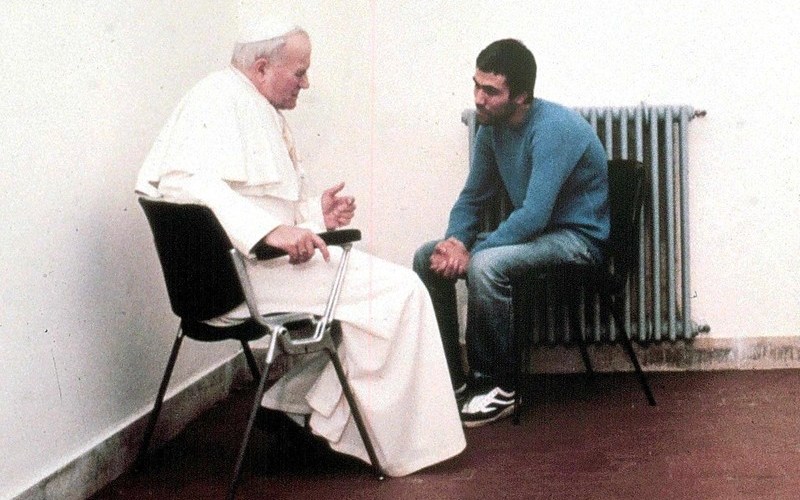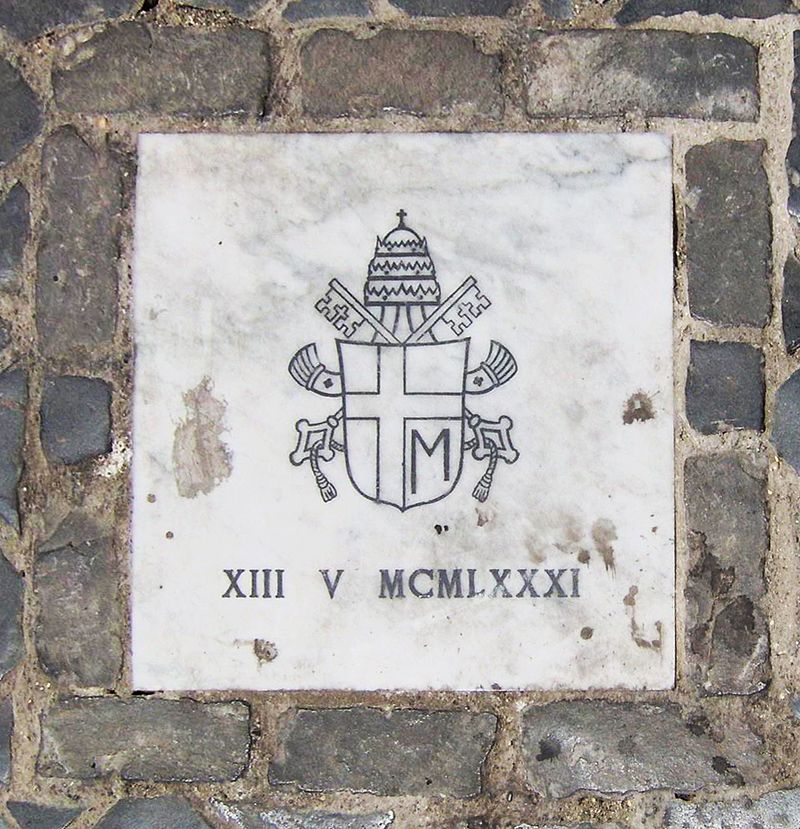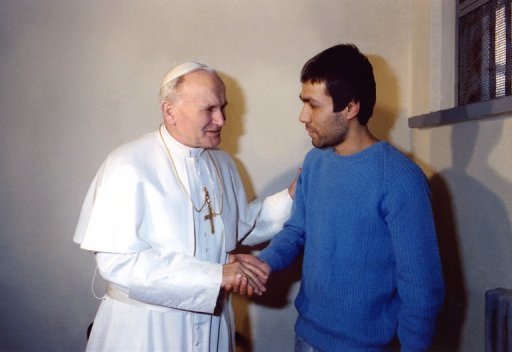Born and raised in the Protestant (Presbyterian, to be specific) tradition, I have some trouble relating to Catholicism. What I find most bothersome is the overemphasis on Mary, the saints and the Pope. Ah, the Bishop of Rome! Some of these “holy fathers” were rather unholy. Who was worse—Pope Stephen VI (896–897), Pope John XII (955–964), Pope Benedict IX (1032–1044, 1045, 1047–1048), Pope Boniface VIII (1294–1303), Pope Urban VI (1378–1389), Pope Alexander VI (1492–1503), Pope Leo X (1513–1521) or Pope Clement VII (1523–1534)? Bad shepherds every one, they scandalized Christendom by consorting with mistresses, having people murdered and cardinals tortured, selling the Papacy, being ravenously greedy, gambling and more. No wonder Martin Luther instigated the Reformation.
There have been many good pontiffs, of course, one of whom is the focus of this article. Pope John Paul II, born Karol Józef Wojtyła, was the sovereign of Vatican City from 1978 until he died in 2005. He trotted the globe, dealt with numerous hot-button issues, helped bring an end to Communism in his native Poland and all of Eastern Europe, improved the Catholic Church’s relations with Protestants, Jews, Muslims and the Eastern Orthodox Church, and was for the most part an admirable leader. I note, however, that he went overboard in beatifying and canonizing Catholics (1,340 and 483, respectively, more than the combined tally of his predecessors from the 16th through the 20th centuries). He also turned a blind eye to the long-running sexual abuse scandal among Church officials—the most egregious of which may have been Marcial Maciel, a priest in Mexico. If sexual abuse within the Church was “a profound contradiction of the teaching and witness of Jesus Christ,” as he said in a 2001 apology, why did he not take forceful action?
At 5:17 p.m. on May 13, 1981 in St. Peter’s Square, he was riding in his specially made Fiat Campagnola (the “Popemobile”) when four shots rang out. They came from 23-year-old Mehmet Ali Agca’s 9-mm Browning semi-automatic gun. All four bullets hit the Pope, critically wounding him and injuring two bystanders. John Paul II was hospitalized for three months but survived. His would-be assassin, Agca, had an accomplice by the name of Oral Çelik. The latter was supposed to have set off a diversionary explosion elsewhere in the square. He lost his nerve, panicked and fled, allowing Agca to be captured. Italian justice is swift, as Agca was convicted two months later and given a sentence of life in prison.
Agca’s motives for trying to send Pope John Paul II into eternity are not easy to discern because he changed his story so many times. A petty criminal and street gang member in Hekimhan, Turkey, Agca claimed to have no political orientation. That is unlikely since he and Çelik were members of the ultra-nationalist Grey Wolves group. In 1979, they murdered Abdi İpekçi, a left-wing Istanbul newspaper editor. As in 1981, Çelik eluded capture but Agca did not. Still, he was quickly sprung from prison by the Grey Wolves and found refuge in Iran and Bulgaria—then a base of operations for the Turkish mafia.
Let us return our attention to John Paul II. He made a surprise trip to Turkey in November 1979, prompting Agca to threaten publicly to kill him. The Pope was, he claimed, “the masked leader of the Crusades.” That papal visit was tense as Ankara and Istanbul were virtually shut down for security purposes. I admire the Pope’s decision to visit Turkey. He did it to reach out to Muslims and to spur ecumenical unity with Eastern Orthodox leaders. In addition, Turkey—Asia Minor—is home to several key sites in early Christian history, including Ephesus, Antioch and Patmos; many of the Apostle Paul’s travels were in what we now call Turkey.
The Pope returned safely to the Vatican after that three-day visit, but Agca and Çelik still had murder on their minds. Support for the 1981 attack may have come from the Soviet KGB (angry about his public support for the trade union movement Solidarity in Poland), or the Bulgarian secret service (at the behest of their Russian overlords), or the Iranians (having just completed a Mohammedan revolution under Ayatollah Khomeini), or maybe the East Germans or maybe the Syrians. Agca told many stories, and who aided him is really beside the point.
While Agca was passing his days in Rebibbia Prison, the Pope showed what Christian love was all about. He forgave his would-be killer and asked people to “pray for my brother.” On December 27, 1983, he made a 15-kilometer journey west to the prison. The two men met in Agca’s cell, shook hands, talked and prayed. It was a private meeting, although some photographs were taken. While I can be as cynical as the next person, I think this encounter was completely genuine on John Paul II’s part. You undoubtedly know that Jesus is quoted in Matthew 25:36 as saying, “I was naked and you clothed me, I was sick and you took care of me, I was in prison and you came to visit me.”
Nothing else in his 26-year Papacy can top this, in my view. I find it difficult if not impossible to imagine the obverse—a Muslim sultan, imam, caliph or whatever, forgiving a Christian who had attempted to kill him, meeting him, shaking his hand and saying prayers on his behalf. At the Pope’s request, Italian President Carlo Azeglio pardoned Agca. He was deported to Turkey in June 2000 only to be imprisoned again in the Abdi İpekçi case. On January 18, 2010, a graying Mehmet Ali Agca was released after spending nearly 29 years behind bars. During that time, the Pope had met with his mother (in 1987) and his brother (1997), further indication of a very beautiful heart.
The erratic Agca made numerous strange explanations for what he had done, and why, back in May 1981. But his regret seemed sincere, the connection with Pope John Paul II having made an impression. He converted to Christianity in 2007 and stated his wish to become a Catholic priest. (He also predicted the end of the world and claimed to be Christ eternal.) This is a dangerous thing for a Muslim to do as Islamic law holds that apostates should be given a merciless death.
One of the terms of Agca’s release from Rebibbia Prison had been that he would stay out of Italy, but he snuck back in and, in 2014, laid white roses at the tomb of Pope John Paul II in St. Peter’s Basilica.
#popejohnpaul2 #mehmetaliagca #rome #vaticancity #christianity #catholicism #abdiİpekçi




Abdi İpekçi, a highly respected journalist in Turkey, murdered in 1979 by Agca.


Add Comment